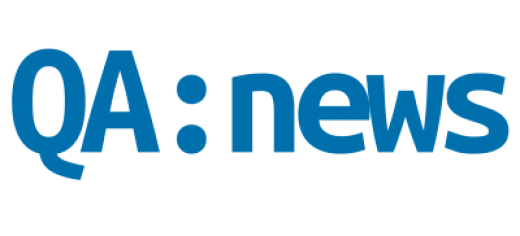In practice, IT solutions all-too often do not meet the business expectations. We have seen that this can change, in fact must change, because of expectations with regard to efficiency and cost savings. In order to meet these expectations we introduce Quality Supervision.
Th e aim of Quality Supervision is the control of programmes, projects and improvement processes. After the implementation of Quality Supervision, the organization is all set for a continuous process of improvement.
e aim of Quality Supervision is the control of programmes, projects and improvement processes. After the implementation of Quality Supervision, the organization is all set for a continuous process of improvement.
The approach ensures quality control of the application by means of supervision
across the entire application lifecycle. We apply supervision by:
- Ensuring balance in improvements in the field of tools, ways of working and people.
- Monitoring the process and product.
- Ensuring a warm handover between demand and supply (on all levels) with the help of Quality Gates.
- Sharing knowledge.
- Managing responsibilities.
- Coaching people.
Three pillars for continuous improvement
 The continuous improvement process by means of Quality Supervision takes into account three areas: operational Quality Assurance, the culture of the organization and knowledge management.
The continuous improvement process by means of Quality Supervision takes into account three areas: operational Quality Assurance, the culture of the organization and knowledge management.
The operational quality assurance mainstay:
– monitors projects and management,
– initiates, inventories and supervises improvement activities.
The ‘culture’ mainstay ensures alignment between improvement activities and
the culture of the organization.
For example: are you willing to make a ‘blue’ person responsible for improvement activities within a ‘white’ organization?[1] De ‘blue’ person likes to work with clear planning schedules and the outcome of activities is determined in advance. The ‘white’ organization stands for creativity and ‘everything is still open’. Maybe not the perfect match with a ‘blue’ person. Of course, no one and no organization is strictly blue or white. But making a good, or the best possible, match contributes in the success of implementing improvements, whether it’s in projects or in an organisation.
 One has to seek the right people for improvements. Knowing the culture of the organization, and the culture of the people of which it consists, is a must. This year we started culture scans. So far we scanned organizations in the branches of finance and telecommunication. We’ve planned a scan for an organization in health care. In these scans we make a distinction between the way people think and the way they act in improvement activities. The results (‘this mirror’) are sometimes surprizing for the participants but also recognizable.
One has to seek the right people for improvements. Knowing the culture of the organization, and the culture of the people of which it consists, is a must. This year we started culture scans. So far we scanned organizations in the branches of finance and telecommunication. We’ve planned a scan for an organization in health care. In these scans we make a distinction between the way people think and the way they act in improvement activities. The results (‘this mirror’) are sometimes surprizing for the participants but also recognizable.
The ‘knowledge management’ mainstay ensures a good implementation and consolidation of the improvement activities and an embedding of the corresponding knowledge. Through knowledge management we ensure the embedding of the improvements, which in turn ensures that new ways of working and/or new tools are genuinely used by the organization.
We achieve the right result by giving the right people the right information at the right moment, so that they perform the right activities.
Better, faster, cheaper, with controlled risks to the right result
Better: we take care of fit-for-purpose quality and predictability of the end product and, as a result, we can deliver ‘right first time’, while the number of ‘escaped defects’ (defects in process and product that are discovered too late) decreases.
Faster: we shorten the lead-time of the project/programme and, with this, the time to market.
Cheaper: we enhance the ‘value for money’ by realizing the business benefits and by deploying resources effectively and efficiently.
Controlled risks: we limit (and preferably eliminate) the risks to the end product by taking the appropriate quality measures in good time.
The result that we achieve with Quality Supervision is that the activities in
the application lifecycle are better, faster and cheaper, with controlled risks,
thus contributing to increasing business success.
More information:
Arno Balemans is Senior Quality Assurance Consultant at Sogeti in the Netherlands. Arno.Balemans@Sogeti.nl
Recently published: ‘Quality Supervision’. ISBN 978 90 75414 68 4 (book) – ISBN 978 90 75414 69 1 (ePub). Or have a look at www.QualitySupervision.nl.
Quality Supervision is a practical implementation of the Quality track of the PointZERO® vision. PointZERO® is described in the book ‘the PointZERO vision’. ISBN 978-90-75414-55-4. Both books are available at www.ict-books.com.



0 comments on “Quality Supervision. Through supervision to the right result”